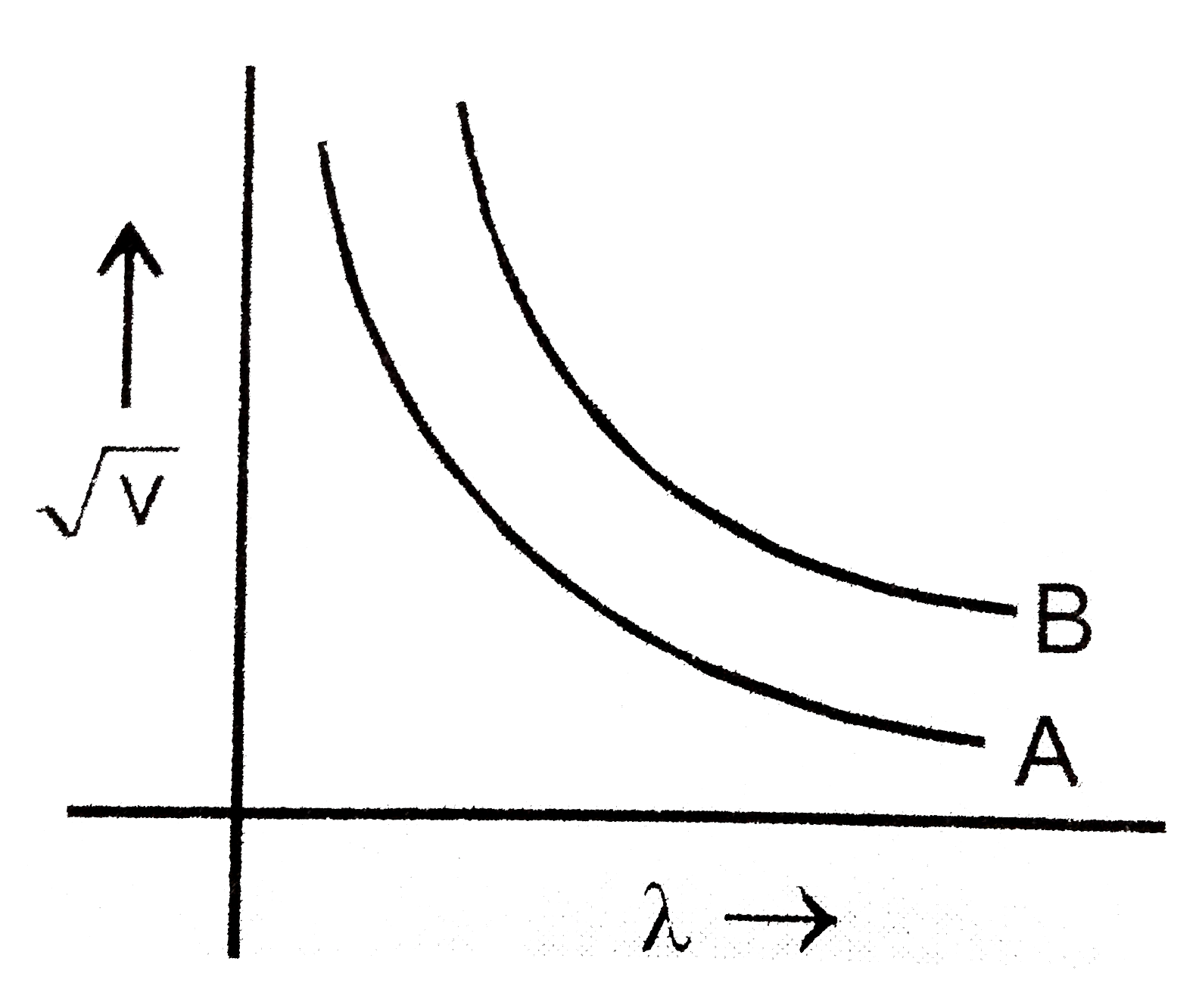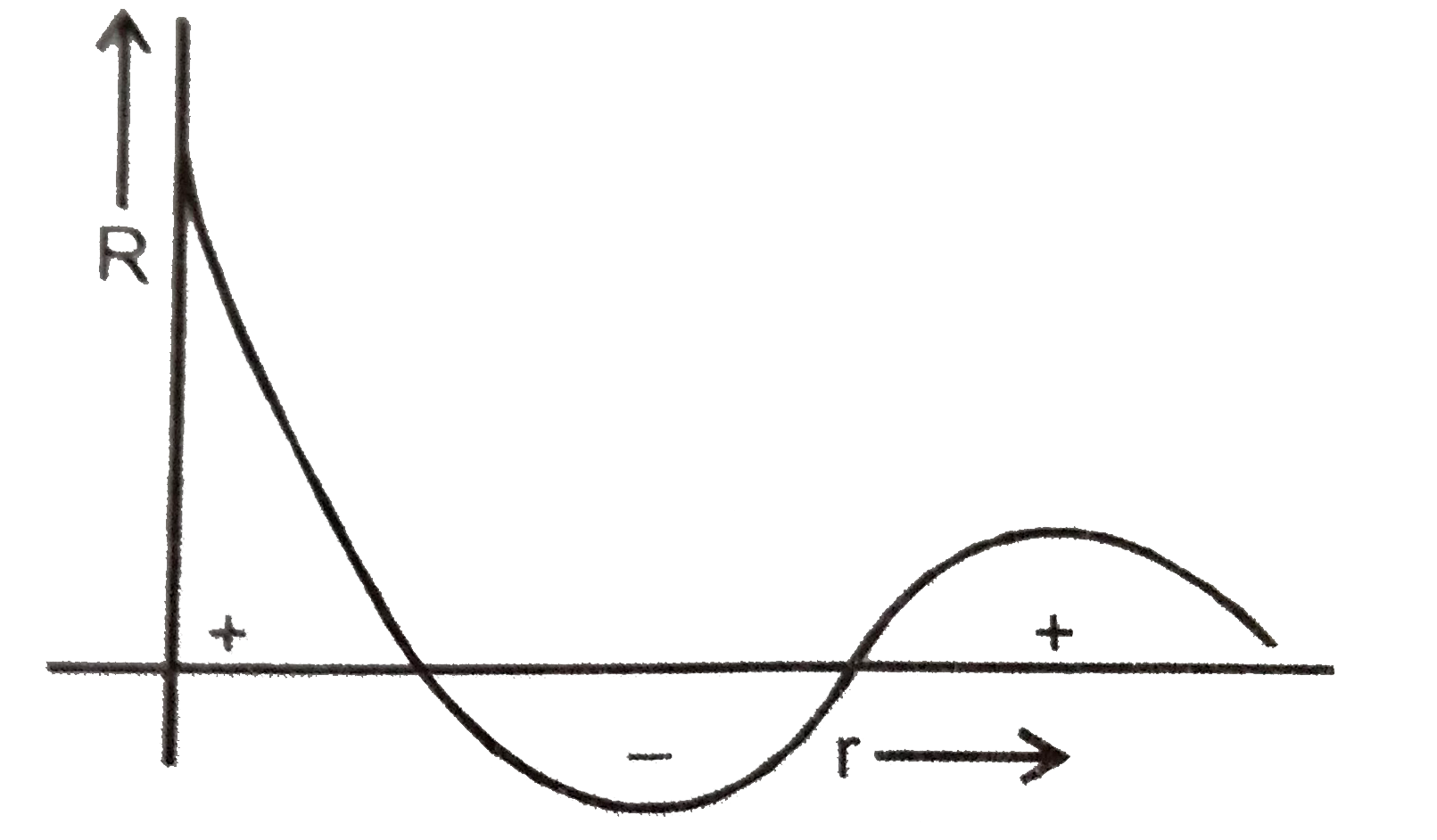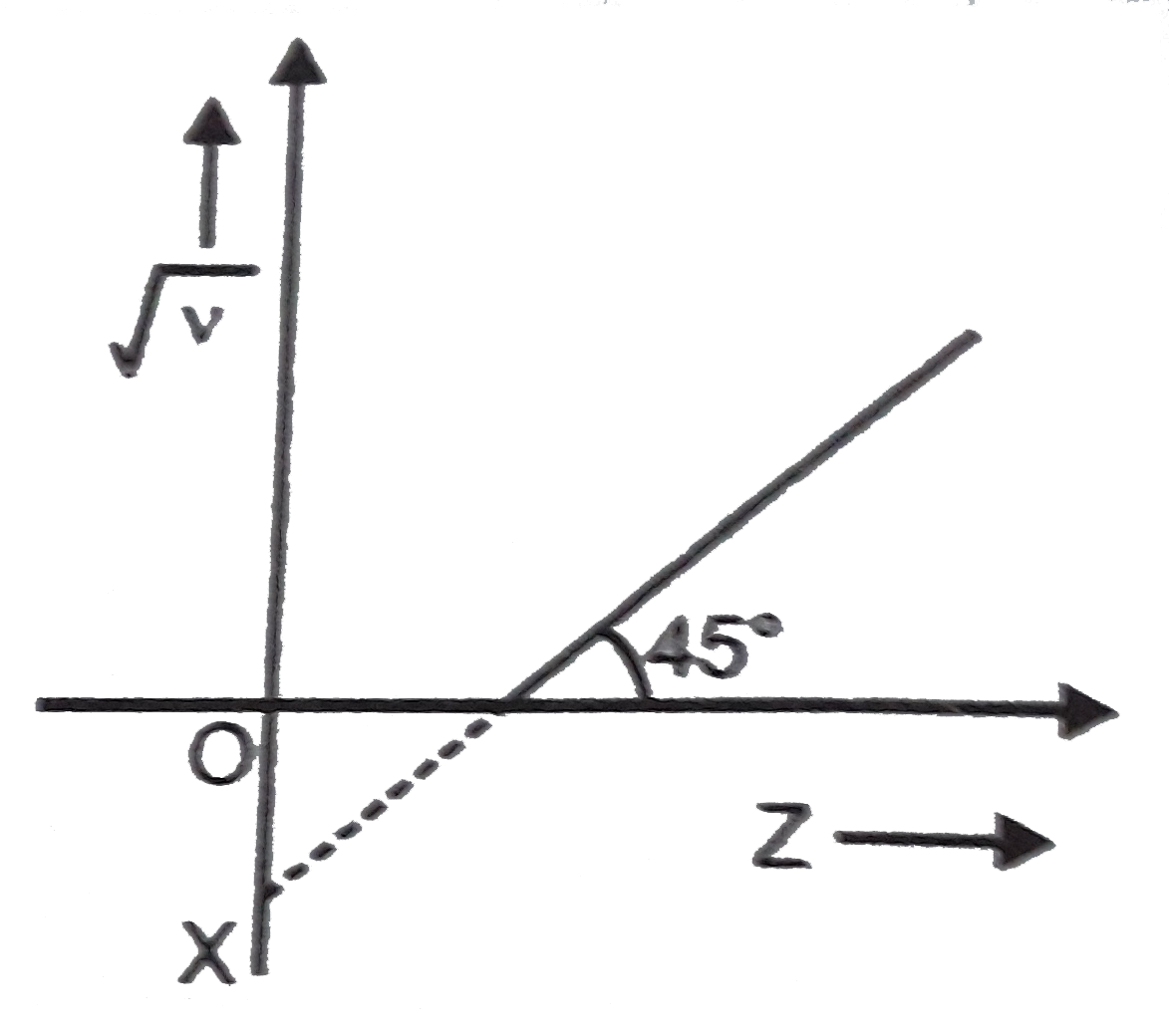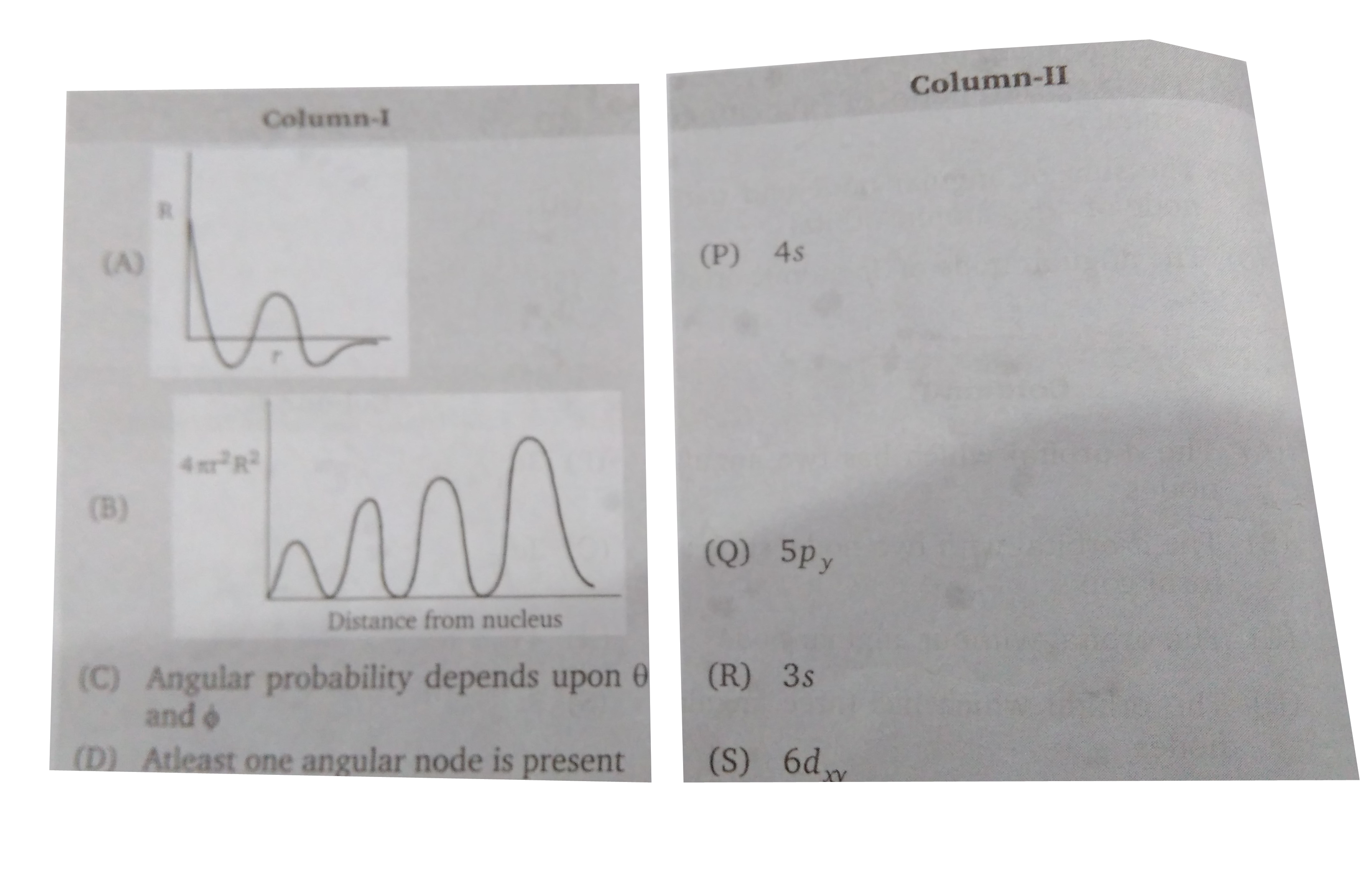All Questions from NARENDRA AWASTHI ATOMIC STUCTURE for Class 11
| Class 11 | CHEMISTRY |
| Chapter | ATOMIC STUCTURE |
| NARENDRA AWASTHI | All Questions |
| Medium | English |
| Academic Year | 2023-2024 |
Question 35
Which of the following statement(s) is/are consistent with the Bohr's theory of the atom (and no others)?
A) An electron can remain in a praticular orbit as long as it continuously absorbs radiation of a definite frequency.
B) The lowest energy orbits are those closest to the nucleus.
C) All electrons can jump from the K shell to the M shell by emitting ratiation of a definite frequency. View SolutionQuestion 118
Give the correct order of initials T(true)F(false) for following satements. (I) If electron has zero quantum magnetic numbers, then it must be present in s-orbital
(II) In orbital diagram, Pauli's exclusion principal is violated
orbital diagram, Pauli's exclusion principal is violated
(III) Bohr's model can explain spectrum of the hydrogen atom.
(IV) A d-orbital can accommodate maximum 10 electrons only.View SolutionQuestion 159
A small particle of mass m moves in such a way that the potential energy U = ar2 where a is a constant and r is the distance of the particle from the origin. Assuming Bohr's model of quantization of angular momentum and circular orbits, find the radius of nth allowed orbit. View SolutionQuestion 169
An element undergoes a reaction as shown sx+2e−→x−2
Energy released =30.87 ev/atom. If the energy released is used to dissociated 4g to H2 molecules equally into H+ and H+ is excited state of H atoms where the electron travels in orbit whose circumference equal to four times its de -roglie's wavelength. Determine the minimum number of moles of x that would be required.
Given IE of H=13.6 ev/atom, bond energy of H2=4.526v/moleculeView SolutionQuestion 177
In a measurement of quantum efficiency of photosynthesis in green plants, it was found that 10 quanta of red light of wavelength 6850 Å were needed to release one molecule of O2. The average energy storage in this process for 1 mol O2 evolved is 112 Kcal.
What is the energy conversion efficieny in this experiment?
Given: 1 cal =4.18 J, NA=6×1023,h=6.63×10−34 J.sView SolutionQuestion 178
A hydrogen-like atom (atomic number Z) is in a higher excited state of quantum number n. This excited atom can make a transition to the first excited state by successively emitting two photons of energies 10.20 eV and 17.00 eV respectively. Alternatively the atom from the same excited state can make a transition to the second excited state by snccessively emitting two photons of energies 4.25 eV and 5.95 eV respectively. Determine the values of n and Z (ionization energy of hydrogen atom = 13.6 eV) View SolutionQuestion 180
If the lowest energy X-rays have λ=3.055×10−8m, estimate the minimum difference in energy between two Bohr.s orbits such that an electronic transition would correspond to emission of an X-ray. Assuming that the electrons in other shells exert no influence, at what Z(minimum) would a transition from the second energy level to the first result in the emission of an X-ray ?View SolutionQuestion 186
Hiesenberg.s uricertainty principle states that it is impossible to determine simultaneously the position and momentum of a particle. He considered the limits of how precisely we can measure properties of an e− (or)other microscopic particles like electron. The more accurately we measure the momentum of a particle, less accurately we can determine its position.
If uncertainty in measurement of position and momentuin are equal calculate the uncertainty in velocity View SolutionQuestion 187
Werner Heisenberg considered the limits of how precisely we can measure the properties of an electron or other microscopic particle. He determined that there is a fundamental limit to how closely we can measure both position and momentum. The more accurately we measure the momentum of a particle, the less accurately we can determine its position. The converse also true. This is summed up in what we now call the Heisenberg uncertainty principle.
The equation si δx.δ(mv)≥h4π
The uncertainty in the position or in the momentum of a marcroscopic object like a baseball is too small to observe. However, the mass of microscopic object such as an electon is small enough for the uncertainty to be relatively large and significant.
If the uncertainty in velocity and position is same, then the uncertainty in momentum will be :View SolutionQuestion 188
Werner Heisenberg considered the limits of how precisely we can measure the properties of an electron or other microscopic particle. He determined that there is a fundamental limit to how closely we can measure both position and momentum. The more accurately we measure the momentum of a particle, the less accurately we can determine its position. The converse also true. This is summed up in what we now call the Heisenberg uncertainty principle.
The equation si δx.δ(mv)≥h4π
The uncertainty in the position or in the momentum of a marcroscopic object like a baseball is too small to observe. However, the mass of microscopic object such as an electon is small enough for the uncertainty to be relatively large and significant.
What would be the minimum uncetaintty in de-Broglie wavelength of a moving electron accelerated by potential difference of 6 volt and whose uncetainty in position is 722 nm?View SolutionQuestion 189
One of the fundamental laws of physics is that matter is most stable with the lowest possible energy. Thus, the electron in a hydrogen atom usually moves in the n=1 orbit, the orbit in which it has the lowest energy. When the electon is in this lowest energy orbit, the atom is said to be in its ground electronic state. If the atom receives energy from an outside source, it is possible for the electron to move ot an orbit with a higher n value, in which case the atoms is in an excited state with a higher energy.
The law of conservation of energy says that we cannot create or destroy energy. Thus, if a certain amount of external energy is required to excite an electron from one energy level to another, then that same amount of energy will be liberated when the electron returns to its initial state.
Lyman series is observed when the electron returns to the lowest orbit while Balmer series is formed when the electron returns returns to second orbit. Similarly, Paschen, Brackett and Pfund series are formed when electrons returns to the third, fourth and fifth orbits from higher energy orbits respectively.
When electrons return form n2 to n1 state, the number of lines in the spectrum will equal to
(n2−n1)(n2−n1+1)2
If the electon comes back from energy level having energy E2 to energy level having energy E1, then the difference may be expressed in terms of energy of photon as :
E2−E1=ΔE,δE⇒hcλ
Since, h and c are constant, δE corresponds to definite energy. Thus, each transition from one energy level to another will produce a radiatiob of definite wavelength. This is actually Wave number of a spectral line is given by the formula
¯v=R(1n21−1n22).
where R is a Rydberg's constant (R=1.1×107m−1)
If the wavelength of series limit of Lyman series for He+ ion is x Å, then what will be the wavelength of series limit of Balmer series for Li2+ ion?View SolutionQuestion 190
One of the fundamental laws of physics is that matter is most stable with the lowest possible energy. Thus, the electron in a hydrogen atom usually moves in the n=1 orbit, the orbit in which it has the lowest energy. When the electon is in this lowest energy orbit, the atom is said to be in its ground electronic state. If the atom receives energy from an outside source, it is possible for the electron to move ot an orbit with a higher n value, in which case the atoms is in an excited state with a higher energy.
The law of conservation of energy says that we cannot create or destroy energy. Thus, if a certain amount of external energy is required to excite an electron from one energy level to another, then that same amount of energy will be liberated when the electron returns to its initial state.
Lyman series is observed when the electron returns to the lowest orbit while Balmer series is formed when the electron returns returns to second orbit. Similarly, Paschen, Brackett and Pfund series are formed when electrons returns to the third, fourth and fifth orbits from higher energy orbits respectively.
When electrons return form n2 to n1 state, the number of lines in the spectrum will equal to
(n2−n1)(n2−n1+1)2
If the electon comes back from energy level having energy E2 to energy level having energy E1, then the difference may be expressed in terms of energy of photon as :
E2−E1=ΔE,δE⇒hcλ
Since, h and c are constant, δE corresponds to definite energy. Thus, each transition from one energy level to another will produce a radiatiob of definite wavelength. This is actually Wave number of a spectral line is given by the formula
¯v=R(1n21−1n22).
where R is a Rydberg's constant (R=1.1×107m−1)
The emission spectra is observed by the consequence of transition of electrons from higher energy state to ground state of He+ ion. Six different photons are observed during the emission spectra, then what will be the minimum wavelength during the transition?View SolutionQuestion 191
One of the fundamental laws of physics is that matter is most stable with the lowest possible energy. Thus, the electron in a hydrogen atom usually moves in the n=1 orbit, the orbit in which it has the lowest energy. When the electon is in this lowest energy orbit, the atom is said to be in its ground electronic state. If the atom receives energy from an outside source, it is possible for the electron to move ot an orbit with a higher n value, in which case the atoms is in an excited state with a higher energy.
The law of conservation of energy says that we cannot create or destroy energy. Thus, if a certain amount of external energy is required to excite an electron from one energy level to another, then that same amount of energy will be liberated when the electron returns to its initial state.
Lyman series is observed when the electron returns to the lowest orbit while Balmer series is formed when the electron returns returns to second orbit. Similarly, Paschen, Brackett and Pfund series are formed when electrons returns to the third, fourth and fifth orbits from higher energy orbits respectively.
When electrons return form n2 to n1 state, the number of lines in the spectrum will equal to
(n2−n1)(n2−n1+1)2
If the electon comes back from energy level having energy E2 to energy level having energy E1, then the difference may be expressed in terms of energy of photon as :
E2−E1=ΔE,δE⇒hcλ
Since, h and c are constant, δE corresponds to definite energy. Thus, each transition from one energy level to another will produce a radiatiob of definite wavelength. This is actually Wave number of a spectral line is given by the formula
¯v=R(1n21−1n22).
where R is a Rydberg's constant (R=1.1×107m−1)
What transition in the hydrogen spectrum would have the same wavelength as Balmer transitio, n=4 to n=2 in the He+ spectrum?View SolutionQuestion 192
One of the fundamental laws of physics is that matter is most stable with the lowest possible energy. Thus, the electron in a hydrogen atom usually moves in the n=1 orbit, the orbit in which it has the lowest energy. When the electon is in this lowest energy orbit, the atom is said to be in its ground electronic state. If the atom receives energy from an outside source, it is possible for the electron to move ot an orbit with a higher n value, in which case the atoms is in an excited state with a higher energy.
The law of conservation of energy says that we cannot create or destroy energy. Thus, if a certain amount of external energy is required to excite an electron from one energy level to another, then that same amount of energy will be liberated when the electron returns to its initial state.
Lyman series is observed when the electron returns to the lowest orbit while Balmer series is formed when the electron returns returns to second orbit. Similarly, Paschen, Brackett and Pfund series are formed when electrons returns to the third, fourth and fifth orbits from higher energy orbits respectively.
When electrons return form n2 to n1 state, the number of lines in the spectrum will equal to
(n2−n1)(n2−n1+1)2
If the electon comes back from energy level having energy E2 to energy level having energy E1, then the difference may be expressed in terms of energy of photon as :
E2−E1=ΔE,δE⇒hcλ
Since, h and c are constant, δE corresponds to definite energy. Thus, each transition from one energy level to another will produce a radiatiob of definite wavelength. This is actually Wave number of a spectral line is given by the formula
¯v=R(1n21−1n22).
where R is a Rydberg's constant (R=1.1×107m−1)
An electron in H-atom in M-shell on de-excitation to ground state gives maximum ........... spectrum lines.View SolutionQuestion 193
The behaviour of an electron in an atom is described mathematically by a wave function, or orbital. Spin of the electron produce angular momentum equal to S=√s(s+1)h2π whereS=+12. Total spin of an atom=+n2 or h2 Where n is the number of unpaired electron.
The substance which contain species with unpaired electrons in their orbitals behave as paramagnetic substances. The paramagnetism is expressed in terms of magnetic moment the magnetic moment of an atom
μs√s(s+1)eh2πmc=√(n2)(n2+1)eh2πmcs=n2⇒μs=√n(n+2)B.M
n = number of unpaired electrons
1 B.M. (Bohr magneton) = eh4πmc
If magnetic moment is zero the substances is di-magnetic.
Which of the following ion has lowest magnetic moement. View SolutionQuestion 194
The behaviour of an electron in an atom is described mathematically by a wave function, or orbital. Spin of the electron produce angular momentum equal to S=√s(s+1)h2π whereS=+12. Total spin of an atom=+n2 or h2 Where n is the number of unpaired electron.
The substance which contain species with unpaired electrons in their orbitals behave as paramagnetic substances. The paramagnetism is expressed in terms of magnetic moment the magnetic moment of an atom
μs√s(s+1)eh2πmc=√(n2)(n2+1)eh2πmcs=n2⇒μs=√n(n+2)B.M
n = number of unpaired electrons
1 B.M. (Bohr magneton) = eh4πmc
If magnetic moment is zero the substances is di-magnetic.
If an ion of 25Mn has a magnetic of 3.873 B.M. Then Mn is in which state. View SolutionQuestion 195
Ozone in the upper atmoshphere absorbs ultraviolet radiation which induces the following chemical reaction
O3(g)→O2(g)+O(g)
O2 produced in the above photochemical dissociation undergoes further dissociation into one normal oxygen atom (O) and more energetic oxygen atom O∗.
O2(g)→O+O∗
(O∗) has 1 eV more energy than(O) and normal dissociation energy of O2 is 480 kJ mol−1.
[1 eV/Photon =96 kJ mol−1]
What is the maximum wavelength effective for the photochemical dissociation of O2 moleculeView SolutionQuestion 196
Ozone in the upper atmoshphere absorbs ultraviolet radiation which induces the following chemical reaction
O3(g)→O2(g)+O(g)
O2 produced in the above photochemical dissociation undergoes further dissociation into one normal oxygen atom (O) and more energetic oxygen atom O∗.
O2(g)→O+O∗
(O∗) has 1 eV more energy than(O) and normal dissociation energy of O2 is 480 kJ mol−1.
[1 eV/Photon =96 kJ mol−1]
If dissociation of O3 into O2 and O requires 400kJ mol−1 and O_(2) produced in this reaction is further dissociated to O and O∗ then the total energy required to for the dissociation of O3 into O and O∗ is :View SolutionQuestion 197
The existence of negatively charged particle in an atom was shown by J.J. Thomson as a result of the studies of the passage of electricity through gases at extremely low pressure known as discharge tube experiments. When a high voltage of the order of 10,000 volts or more was impressed across the electrodes, some sort of invisible rays moved from the negative electrode to the positive electrode these rays are called as cathode rays.

Cathode rays travel in straight path in absence of electrical and magnetic field . Cathode rays consist of material part and charged particles? Cathode rays produce X-rays and light is emitted when they strike on ZnS screen. Cathode rays penetrate through thin sheets of aluminium and other metals . They affect the photogenic plate and passes heating effect when they strike on metal foil. The raito of charge to mass i.e charge/mass is same for all the cathode rays irrespective of the gas used in the tube.
The existence of positively charged particle in an atom was shown be E. Goldstein. He repeated the same discharge tube experiments by using a perforated cathode. It was observed that when a high potential difference was applied between the electrodes, not only cathode rays were produced but also a new type of rays were produced simultaneoulsy from anode moving towards cathode and passes through the holes or canal of the cathode. These termed as canal rays or anode rays.
These rays travel in straight lines and consists of positively charged particles. These rays have kinetic energy and produces heating effect also. The e/m ratio of these rays is smaller than that of electrons. Unlike cathode rays, their e/m value is dependent upon the nature of the gas taken in the tube. These rays produced flashes of light on ZnS screen and can pass throughs thin metal foils. They can produce physical and chemical changes and are capable to produce ionisation in gases.
For cathode rays the value of e/m:View SolutionQuestion 198
The existence of negatively charged particle in an atom was shown by J.J. Thomson as a result of the studies of the passage of electricity through gases at extremely low pressure known as discharge tube experiments. When a high voltage of the order of 10,000 volts or more was impressed across the electrodes, some sort of invisible rays moved from the negative electrode to the positive electrode these rays are called as cathode rays.

Cathode rays travel in straight path in absence of electrical and magnetic field . Cathode rays consist of material part and charged particles? Cathode rays produce X-rays and light is emitted when they strike on ZnS screen. Cathode rays penetrate through thin sheets of aluminium and other metals . They affect the photogenic plate and passes heating effect when they strike on metal foil. The raito of charge to mass i.e charge/mass is same for all the cathode rays irrespective of the gas used in the tube.
The existence of positively charged particle in an atom was shown be E. Goldstein. He repeated the same discharge tube experiments by using a perforated cathode. It was observed that when a high potential difference was applied between the electrodes, not only cathode rays were produced but also a new type of rays were produced simultaneoulsy from anode moving towards cathode and passes through the holes or canal of the cathode. These termed as canal rays or anode rays.
These rays travel in straight lines and consists of positively charged particles. These rays have kinetic energy and produces heating effect also. The e/m ratio of these rays is smaller than that of electrons. Unlike cathode rays, their e/m value is dependent upon the nature of the gas taken in the tube. These rays produced flashes of light on ZnS screen and can pass throughs thin metal foils. They can produce physical and chemical changes and are capable to produce ionisation in gases.
Which is not true with respect to cathode rays?View SolutionQuestion 199
The existence of negatively charged particle in an atom was shown by J.J. Thomson as a result of the studies of the passage of electricity through gases at extremely low pressure known as discharge tube experiments. When a high voltage of the order of 10,000 volts or more was impressed across the electrodes, some sort of invisible rays moved from the negative electrode to the positive electrode these rays are called as cathode rays.

Cathode rays travel in straight path in absence of electrical and magnetic field . Cathode rays consist of material part and charged particles? Cathode rays produce X-rays and light is emitted when they strike on ZnS screen. Cathode rays penetrate through thin sheets of aluminium and other metals . They affect the photogenic plate and passes heating effect when they strike on metal foil. The raito of charge to mass i.e charge/mass is same for all the cathode rays irrespective of the gas used in the tube.
The existence of positively charged particle in an atom was shown be E. Goldstein. He repeated the same discharge tube experiments by using a perforated cathode. It was observed that when a high potential difference was applied between the electrodes, not only cathode rays were produced but also a new type of rays were produced simultaneoulsy from anode moving towards cathode and passes through the holes or canal of the cathode. These termed as canal rays or anode rays.
These rays travel in straight lines and consists of positively charged particles. These rays have kinetic energy and produces heating effect also. The e/m ratio of these rays is smaller than that of electrons. Unlike cathode rays, their e/m value is dependent upon the nature of the gas taken in the tube. These rays produced flashes of light on ZnS screen and can pass throughs thin metal foils. They can produce physical and chemical changes and are capable to produce ionisation in gases.
Select the incorrect statement. View SolutionQuestion 214
The radial distribution function [P(r)] is used to determine the most probble radius, which is used to find the electron in a given orbital. dp(r)dr for 1s- orbital of hydrogen like atom having atomic number Z, is dpdr=4Z3ao3(2r2Zr2ao)e−2zr/ao:
Then which of the following sttements is/are correct ?View SolutionQuestion 222
Column-I and Column-II contains fore entries each. Entries of Column-I are to be matched with some enties of Column-II One or more than one entries of Column-I may have the matching with the same entries oc Column-II.
ColumnIColumnII(A)Electron(P)Negetive charge(B)Proton(Q)Positive charge(C)Neutron(R)1.6×10−19C(D)Positron(S)ChargelessView SolutionQuestion 253
Infrared lamps are used in restaurants to keep the food warm. The infrared radiation is strongly absorbed by water, raising its temperature and that of the food. If the wavelength of infrared radiationis assumed to be 1500 nm, and the number of quanta of infrared radiation produced per second by an infrared lamp (that consumes enregy at the rate of 100 W and is 12% effcient only is y×1019, then the value of y is :
(Given:h=6.665×10−34J−s) View Solution
All Exercises from NARENDRA AWASTHI Class 11 CHEMISTRY ATOMIC STUCTURE
- ALL QUESTIONS
- EXERCISE
- LEVEL 2
- LEVEL- 1
- ALL QUESTIONS
- EXERCISE
- LEVEL 2
- LEVEL- 1
- ALL QUESTIONS
- EXERCISE
- LEVEL 2
- LEVEL- 1
- ALL QUESTIONS
- EXERCISE
- LEVEL 2
- LEVEL- 1
- ALL QUESTIONS
- EXERCISE
- LEVEL 2
- LEVEL- 1
- ALL QUESTIONS
- EXERCISE
- LEVEL 2
- LEVEL- 1
- ALL QUESTIONS
- EXERCISE
- LEVEL 2
- LEVEL- 1
- ALL QUESTIONS
- EXERCISE
- LEVEL 2
- LEVEL- 1
- ALL QUESTIONS
- EXERCISE
- LEVEL 2
- LEVEL- 1









 STATEMENT-2: Electronic are filled in orbitals as per aufbau principle, Hund's rule of maximum spin multiplicity and puli's principle.
STATEMENT-2: Electronic are filled in orbitals as per aufbau principle, Hund's rule of maximum spin multiplicity and puli's principle.